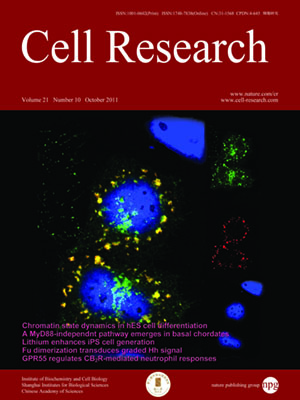Volume 21 Issue 10, October 2011: 1470-1486
ORIGINAL ARTICLES
Oct-4+/Tenascin C+ neuroblastoma cells serve as progenitors of tumor-derived endothelial cells
Annalisa Pezzolo1, Federica Parodi1, Danilo Marimpietri1, Lizzia Raffaghello1, Claudia Cocco2, Angela Pistorio3, Manuela Mosconi4, Claudio Gambini4, Michele Cilli
1Laboratory of Oncology
2AIRC Tumor Immunology Unit
3Epidemiology and Biostatistics Unit, Istituto Giannina Gaslini, Largo G. Gaslini 5, 16147 Genova-Quarto, Italy
4Laboratory of Pathology, Department of Experimental and Laboratory Medicine, IRCCS G. Gaslini Hospital, Genova, Italy
5Animal Research Facility, National Cancer Institute, Genova, Italy
6Department of Genetics, Biology and Biochemistry, University of Torino, Torino, Italy
Correspondence: Annalisa Pezzolo,(annalisapezzolo@ospedale-gaslini.ge.it)
Neuroblastoma (NB)-associated endothelial microvessels (EMs) may be lined by tumor-derived endothelial cells (TECs), that are genetically unstable and chemoresistant. Here we have addressed the identification of TEC progenitors in NB by focusing on Octamer-binding transcription factor 4 (Oct-4) as a putative marker. Oct-4
+ cells were detected in primary NB samples (
n = 23), metastatic bone marrow aspirates (
n = 10), NB cell lines (
n = 4), and orthotopic tumors (
n = 10) formed by the HTLA-230 NB cell line in immunodeficient mice. Most Oct-4
+ cells showed a perivascular distribution, with 5% of them homing in perinecrotic areas. All Oct-4
+ cells were tumor-derived since they shared amplification of
MYCN oncogene with malignant cells. Perivascular Oct-4
+ cells expressed stem cell-related, neural progenitor-related and NB-related markers, including surface Tenascin C (TNC), that was absent from perinecrotic Oct-4
+ cells and bulk tumor cells. TNC
+ but not TNC
− HTLA-230 cells differentiated
in vitro into endothelial-like cells expressing vascular-endothelial-cadherin, prostate-specific membrane antigen and CD31 upon culture in medium containing vascular endothelial growth factor (VEGF). TNC
+ but not TNC
− HTLA-230 cells formed neurospheres when cultured in serum-free medium. Both cell fractions were tumorigenic, but only tumors formed by TNC
+ cells contained EMs lined by TECs. In conclusion, we have identified in NB tumors two putative niches containing Oct-4
+ tumor cells. Oct-4
+/TNC
+ perivascular NB cells displayed a high degree of plasticity and served as progenitors of TECs. Therapeutic targeting of Oct4
+/TNC
+ progenitors may counteract the contribution of NB-derived ECs to tumor relapse and chemoresistance.
Cell Research (2011) 21:1470-1486. doi:10.1038/cr.2011.38; published online 15 March 2011
FULL TEXT | PDF
Browse 2052


